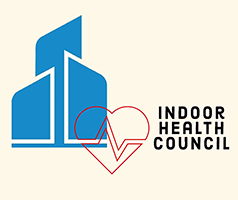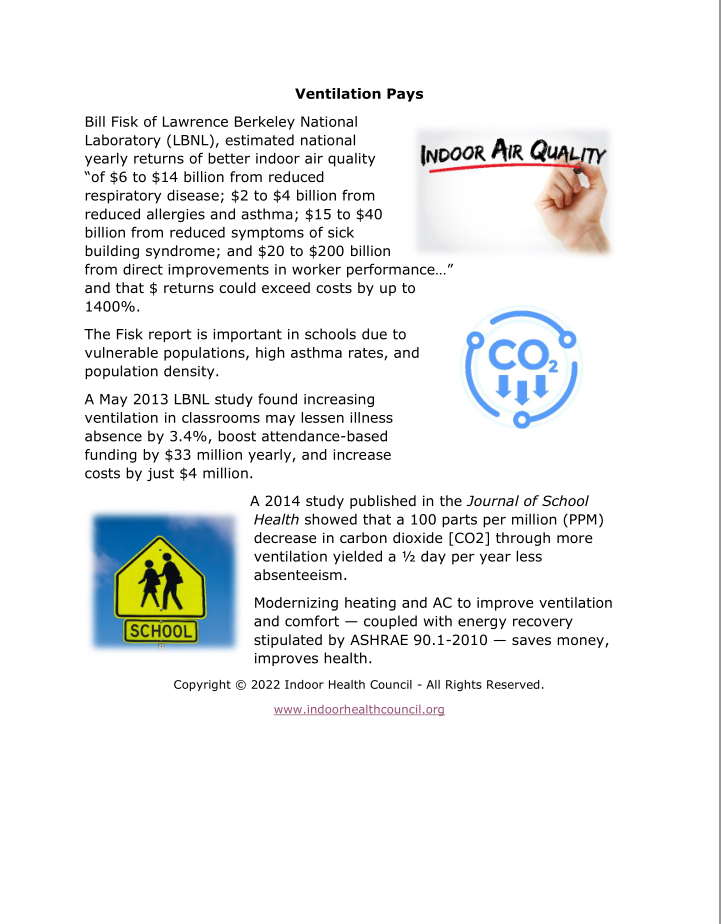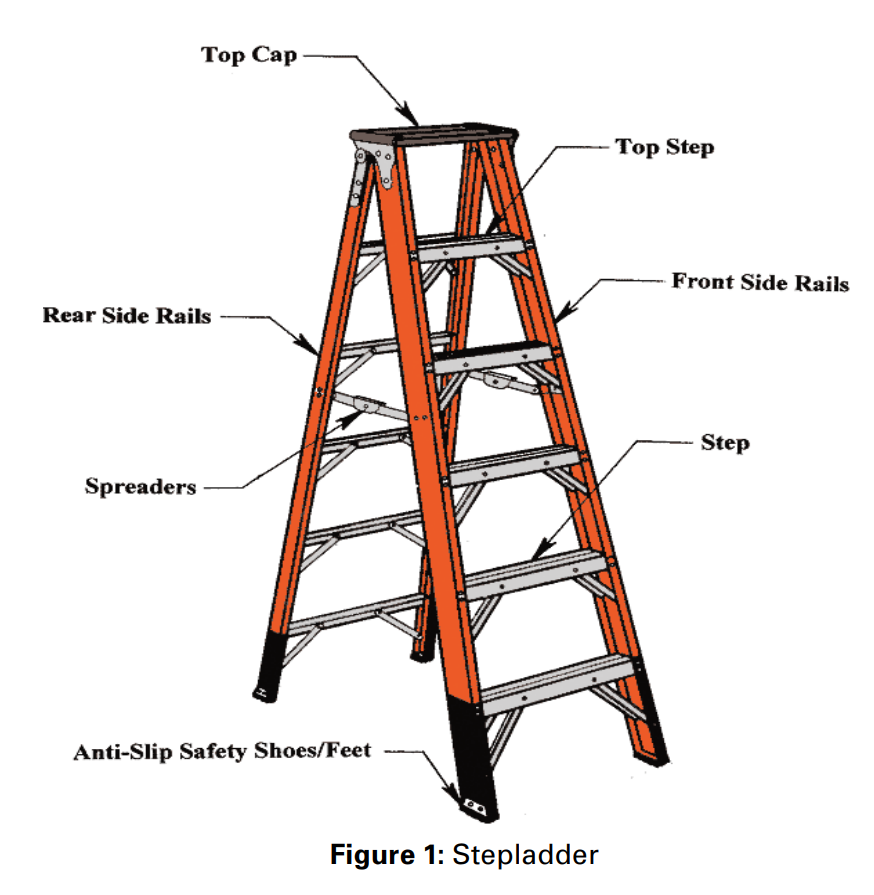Ventilation Pays
Bill Fisk of Lawrence Berkeley National Laboratory (LBNL), estimated national yearly returns of better indoor air quality “of $6 to $14 billion from reduced respiratory disease; $2 to $4 billion from reduced allergies and asthma; $15 to $40 billion from reduced symptoms of sick building syndrome; and $20 to $200 billion from direct improvements in worker performance…” and that $ returns could exceed costs by up to 1400%.
The Fisk report is important in schools due to vulnerable populations, high asthma rates, and population density.
A May 2013 LBNL study found increasing ventilation in classrooms may lessen illness absence by 3.4%, boost attendance-based funding by $33 million yearly, and increase costs by just $4 million.
A 2014 study published in the Journal of School Health showed that a 100 parts per million (PPM) decrease in carbon dioxide [CO2] through more ventilation yielded a ½ day per year less absenteeism.
Modernizing heating and AC to improve ventilation and comfort — coupled with energy recovery stipulated by ASHRAE 90.1-2010 — saves money, improves health.





